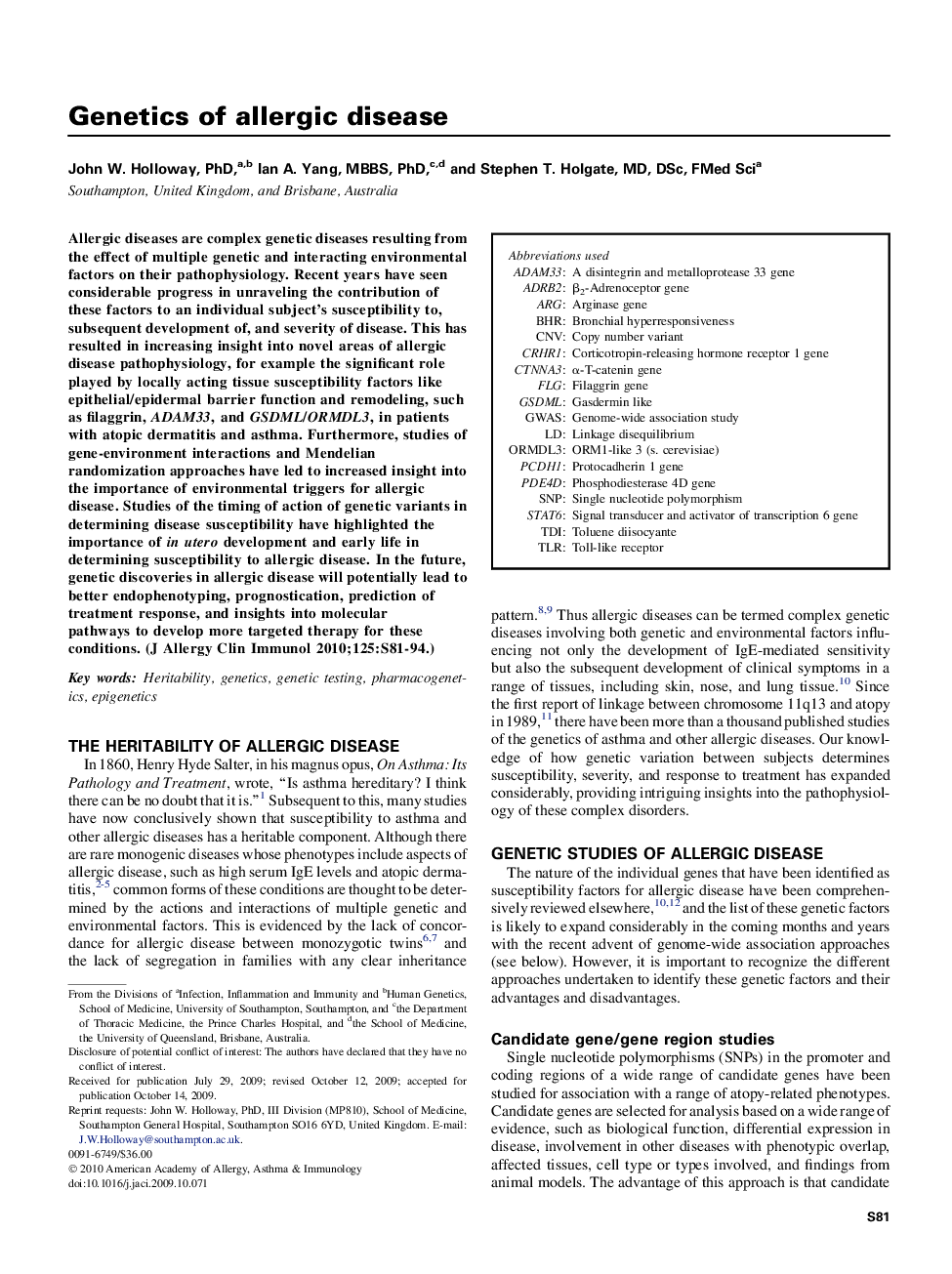| Article ID | Journal | Published Year | Pages | File Type |
|---|---|---|---|---|
| 3199747 | Journal of Allergy and Clinical Immunology | 2010 | 14 Pages |
Allergic diseases are complex genetic diseases resulting from the effect of multiple genetic and interacting environmental factors on their pathophysiology. Recent years have seen considerable progress in unraveling the contribution of these factors to an individual subject's susceptibility to, subsequent development of, and severity of disease. This has resulted in increasing insight into novel areas of allergic disease pathophysiology, for example the significant role played by locally acting tissue susceptibility factors like epithelial/epidermal barrier function and remodeling, such as filaggrin, ADAM33, and GSDML/ORMDL3, in patients with atopic dermatitis and asthma. Furthermore, studies of gene-environment interactions and Mendelian randomization approaches have led to increased insight into the importance of environmental triggers for allergic disease. Studies of the timing of action of genetic variants in determining disease susceptibility have highlighted the importance of in utero development and early life in determining susceptibility to allergic disease. In the future, genetic discoveries in allergic disease will potentially lead to better endophenotyping, prognostication, prediction of treatment response, and insights into molecular pathways to develop more targeted therapy for these conditions.
